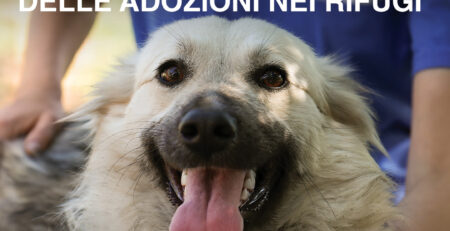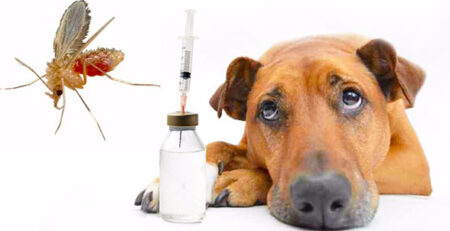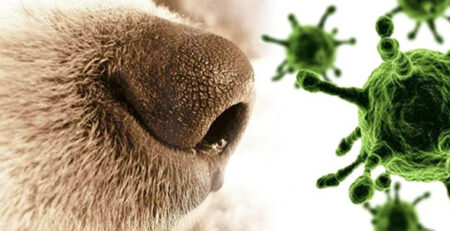Table of Contents
Fleas, ticks, mosquitoes, and phlebotomids: these are parasites that use substances in their host’s bodies to feed and are avowed enemies of dogs and cats.
Rising temperatures promote the reproduction and spread of these obnoxious and dangerous four-legged enemies.
Even if you don’t see them, the obnoxious parasites are always there and can cause serious health problems for your dog or cat.
Unfortunately, pests are always lurking, and rising temperatures encourage their reproduction and spread
That’s why you need to treat your dog or cat against fleas, ticks, mosquitoes, and phlebotomus (better known as parasites) throughout the year and even more scrupulously as early as the spring period.
Let’s learn more about external parasites to understand how they act, what they cause, and why they are so dangerous.
Fleas, the most obnoxious pests
Fleas are wingless, tiny and extremely fast insects.
They are hematophagous external parasites i.e., they feed on the blood of mammals and birds.
They basically creep and scamper into the animal’s fur where, moreover, they deposit their excrement.
The droppings are very small, dark-colored grains that unquestionably signal their presence.
Flea infestation can result in serious consequences in the animal:
- allergies
- dermatitis
- internal parasitosis
- blood diseases
Ticks, the most insidious parasites
Ticks, on the other hand, belong to a suborder of mites.
They pierce the animal’s skin and attach firmly to it.
Ticks also feed on blood.
In addition to this, they are capable of carrying pathogens of different kinds (viruses, bacteria, protozoa) responsible for very dangerous diseases: Rickettsiosis andEhrlichiosis are among the best known.
Rickettsiosis and Ehrlichiosis are manifested by high fever, drowsiness, joint pain, loss of appetite, weight loss, and nervous and skeletal symptoms.
He thinks that it only takes the bite of one tick to infect a dog.
Parasites or phlebotomes, the most underestimated pests
The pappatacio or phlebotomus is a very common insect in the Mediterranean area.
It is very similar to a mosquito but is smaller in size and quieter.
The activity of this vector occurs in the twilight and night hours, after sunset and when temperatures are between 15 and 20°C.
Through its puncture it can carry a virus that in humans causes a disease called “parrot fever” while to dogs it transmits Leishmaniasis, a disease unfortunately endemic in Sicily.
Leishmania is characterized by an incubation period that can last up to several years before manifesting itself through its characteristic symptoms:
- dermatitis
- weight loss
- hair loss
- ear injuries
- nosebleed
- accelerated nail growth
- eye injuries
- renal failure
Mosquitoes, filaria parasites
One disease whose increasing prevalence is truly alarming is filaria (or filariasis), which is transmitted to the animal through mosquito bites.
The mosquito injects a larva into the bloodstream, which grows into a worm and through the circulatory system, migrates to the dog’s heart and lungs, causing problems in the cardio-respiratory system and even, even the death of the animal.
How to defend dogs and cats from hateful pests?
Well, fortunately there are pesticides and repellents available in pharmacies and specialty stores.
The most common can be found in the form of sprays, spot ons, shampoos and collars:
- Spot ons are applied in the interscapular area, almost near the nape of the neck, so as to prevent the animal from licking itself. They should be used at least one week after the last grooming, as they take advantage of skin fat to spread their effect.
- The spray should usually be applied by spraying it onto the hand (so be careful to wear gloves) and then massaging the product into the animal’s skin.
- Also contributing to the effectiveness of spot on and sprays are flea collars with slow-release action of active ingredients, providing coverage from 6 to 8 months.
Against pests, prevention in the home is also key
For prevent the proliferation of fleas and ticks, always perform a thorough cleaning of the house, kennel and car.
You can also use room repellent sprays made from essences and essential oils of flowers and plants.
- Lavender and geranium for mites and ticks
- Citronella, mint, eucalyptus and basil for mosquitoes
These act by creating a “shield” against external threats and inhibit the larval development of the dreaded pests.
Always consult your veterinarian for advice on the most suitable pesticides
Using the right pesticides means taking care of your pet responsibly.
Absolutely avoid DIY.
Know, in this regard, that most pesticides suitable for dogs are harmful to cats.
Even some dog products, if applied to a cat, can cause severe symptoms of intoxication and even cause its death.
So, the application of pesticide products must take into account a whole range of variables:
- animal species
- age
- possible presence of pathologies
- geographical area
Your trusted veterinarian will know from time to time, on the basis of these and other parameters, how to recommend the most suitable product, both in terms of type and dosage, and in terms of application methods and intervals.
To be certain of the anti-parasitic and repellent efficacy of the products you use, diligently adhere to the application and dosage intervals indicated by your Veterinarian.
In this regard, we would like to remind you that the Veterinary Doctors on our Staff are always available to answer all your questions and that in case of need and urgency, La Veterinaria Clinic is open daily h24 including holidays and with First Aid service from 8 pm to 8 am.
For the joy of seeing them happy











